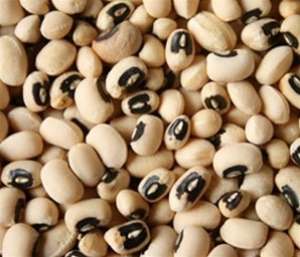Climate
Senegal is one of the sunniest countries in the world, with over 3000 hours of sunshine annually. Its climate is tropical, typically with a long dry season from November to June, with temperatures ranging from 22°C and 30°C, and large variations between the coast and the interior. The rainy season runs from July to October. Some consider it the most beautiful season, as vegetation is reborn amidst storms and wonderful colours, and the sea is at its warmest. In the centre and north of the country, intermittent rains last approximately from July to September.
In Dakar, the maximum daytime temperature is 24°C from January to March, and between 25°C and 27°C in April, May and December. Temperatures climb to 30°C from June to October.
In southern Senegal, the coolest period is from December to mid-February, with daytime temperatures averaging around 24°C.
In October and November, as well as mid-February to April, maximum temperatures are in the region of 26°C. From July to September, they can reach 30°C or even higher.
Geography
The trek will take you into the Sine-Saloum delta biosphere reserve, south of the Petite-Côte – a region blessed with a wealth of history and culture. Sine-Saloum takes its name from the Saloum River and its main tributary, the Sine. The region once harboured the Serer kingdoms of Sine (capital: Diakhao) and Saloum (capital: Kahone). The Sine-Saloum delta national park is one of Senegal’s most picturesque sites. Covering about 180,000 hectares, the area consists of mangroves, lagoons, forests and sand-spits.
History
The Serer people emerged from an ethnic group of land surveyors, great pyramid-builders and boatmen of the Nile. Under the protection of Ra, they left to reside in the Sahel, in the kingdoms of Wagadu and Awdaghust, before settling down in the Senegal River Valley, where they lived alongside the Fula and the Soninke.
In the ninth century, they refused to submit to the Almoravid Berbers who wished to introduce Islam, instead re-establishing themselves in the Baol (Fa-ool), Sine (A Sing) and Saloum (A Mbèye) regions of inland Senegal. Ruled by lamane chiefs, these lands were handed down from father to son, giving rise to the Serer kingdoms of Baol, Sine and Saloum.
Mandinka aristocrats from Kaabu intermingled with the Kassinka (Serer), thus giving birth to the Guelowar dynasty. Some of them remained around the islands of Saloum and the Petite-Côte, which led to the emergence of the Serer Niominka ethnic group. Their aristocratic society is egalitarian and casteless, hence their often intensely independent spirit.
The Niominka’s cultural fusion has led them to become a synthesis of farmers, shepherds and fishermen. They engage in fishing, agriculture (rice, millet, peanuts) and farming (oxen, goats and sheep).
* Additional information
Tann: a word borrowed from the Wolof tan, meaning “expanse of salt flats”. The poet and president Léopold Sédar Senghor greatly contributed to making the tanns known outside of his country.

Millet (Pennisetum glaucum) is the most drought-resistant of all cereals. In Africa, 70% of millet is produced in the west of the continent. This grain has a higher nutritional value than rice or wheat, and can be eaten as gruel, couscous or flat cakes. It may also be used in making alcoholic beverages like millet beer.

Sorghum (Sorghum bicolor) is the next largest cereal crop after wheat, rice, maize and barley. It is a robust perennial plant that is mostly grown annually. It can reach heights of four metres and is extremely hardy in difficult growing conditions. Sorghum is well suited to subsistence agriculture and the local market. It probably originated in Ethiopia, before spreading to the rest of Africa, and was known in Rome by the time of Pliny the Elder.

Black-eyed beans (Vigna unguiculata) are one of the main leguminous food plants worldwide. Grown on over nine million hectares in all tropical zones and the Mediterranean Basin, they are the source of over half of all protein consumed there, and play a key dietary role.

Palmarin Nature Reserve covers 10,480 hectares in the Saloum area, and was established in 2001 on the initiative of people from the region. It has allowed both the archaeological and historical heritage of this natural area to be preserved, as well as protecting its birdlife, fauna and flora, and attracting new species of birds. In particular, it is the habitat for a wild spotted hyena population which one can observe at sunset. Entry tickets for the reserve are valid for 24 hours.

Samba Dia forest reserve is located near the entrance to the Sine-Saloum reserve, to the southeast of Joal-Fadiouth. The area has been protected since January 1, 1936 and was designated a biosphere reserve in 1979. The majority of its trees are Palmyra palms (Borassus aethiopum), together with around twenty other species, including red acacias (Acacia seyal), African birch (Anogeissus leiocarpa) and Combretum glutinosum.

Information about the side-trips included during the tour
